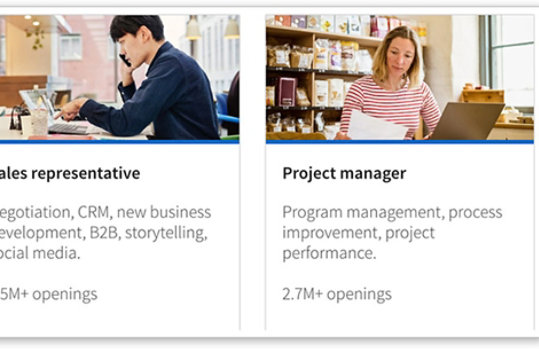Finding a job is hard. If you’re not sure how to search for a job, staying healthy, organized, and connected will boost your prospects for success.
There are many aspects of a job search to manage, from updating resumes to interviewing. Hearing no—or, worse yet, not hearing back at all—can be hard, especially if it takes a while to find the perfect fit.
By creating a plan, prioritizing your well-being, and using tools to hold yourself accountable, you’ll bring structure and organization to each day. Use the following tips to keep yourself on task, reduce stress, and make searching for a job less daunting.

To manage your time, Amanda Augustine, a career expert for TopResume, recommends breaking each day into “smaller, digestible chunks of work.” While searching for a job, you don’t need to micromanage every minute of every day, but creating a plan brings structure to your days and weeks—and relieves you of stressful, in-the-moment decisions about how best to spend your time.
Once you’ve divided your day into small tasks, Augustine recommends setting goals. For instance, you may decide to apply for at least five opportunities a week or set up at least two informational interviews with people who work in an industry or at a company that interests you.

Microsteps are small, science-backed actions you can start taking right away to build habits that will strengthen your job search. Make them a part of your daily plan—and before long, they’ll become routine.
Try three Microsteps to power your job search:
Take these Microsteps for greater well-being:
Be sure to block time each day for networking to tap into the resource most likely to get results: other people.
Often, people will approach their job search by sitting in front of their computer all day, applying to jobs found on job boards. But this has limited effectiveness, says Terrence Seamon, an executive career transition consultant at The Ayers Group who advises professionals and executives through job searches and career changes.
“The longer you hesitate to leverage the power in your network, the longer your search may take,” he says.

To effectively put yourself out there on LinkedIn, make yourself visible. Reshare a connection’s post with one or two of your key takeaways. Post on a regular basis—and be sure to include relevant hashtags to extend your content’s reach and prompt hiring managers or other professionals to reach out to you directly. Every action you take, however small, increases your chance of getting noticed.
Find a job-hunting partner
Searching for work can be isolating, but it isn’t something you have to do alone.
Augustine recommends partnering up with another person in your industry or with similar job goals. “By working together, you can double your job-search efforts and find some much-needed solace knowing that someone else is going through the same thing as you.”
You can bounce your résumés off each other, provide suggestions to improve your LinkedIn profiles, practice for interviews together, and more.
Choose a positive mindset and stay motivated
“Negative thinking just comes with the territory of losing a job,” says Seamon. And many people approach their search with the limiting mindset that networking is “begging for a job.”
But, as Seamon says, we have the power to choose our own thoughts and reactions. He advises clients to identify their negative thoughts first and then replace them by using a “positive thought exercise.” He recommends these exercises.
Try three positive thought exercises:
These exercises will not only help you shift your mindset in the moment; they’ll help you prepare for networking conversations and, eventually, job interviews. Instead of feeling like you’re begging for a job, these positive exercises shift attention away from what you’re trying to get and move them toward what you have to offer. When the time comes for those conversations and interviews with potential employers, the positive outlook will come across.

Use the power of Windows 11 to help with your job search. Fortunately, a lot of your job-search activities can be done online, but that also means you’ll quickly accumulate online content to keep track of and refer to later. With Collections on Microsoft Edge, you can gather, organize, and share the information you find across the web that is key to your job search. Whether it’s job listings, resume tips, or something else, you can add entire web pages or just text, images, and snippets and store them in a collection to reference throughout your job search journey. You can also export them to Word, Excel, or OneNote. Create multiple collections to organize different types of content, such as Job listings to apply for or LinkedIn Learning courses to take. Learn more about how Windows 11 can help you stay organized.

Job hunting is an inherently stressful journey, and the challenges of this time only add to the uncertainty. By creating a plan, you’ll reduce stress and see that you have more control over the process than you realize. Take care of yourself, stay positive, and remember that you’ve overcome challenges before.
The experts cited in this story were not paid for their participation, nor does their participation imply an endorsement of the products and/or services mentioned above.

Get tips on how to present your best self from a recruiter’s first look at your resume or LinkedIn profile to preparing for a job interview.

Empower yourself & take control of your career progression today with these 4 steps from Microsoft.

Discover the dashboard where you can check your security at a glance, plus how to keep your personal info private and best protect your photos, videos, documents, and more.
Share this page